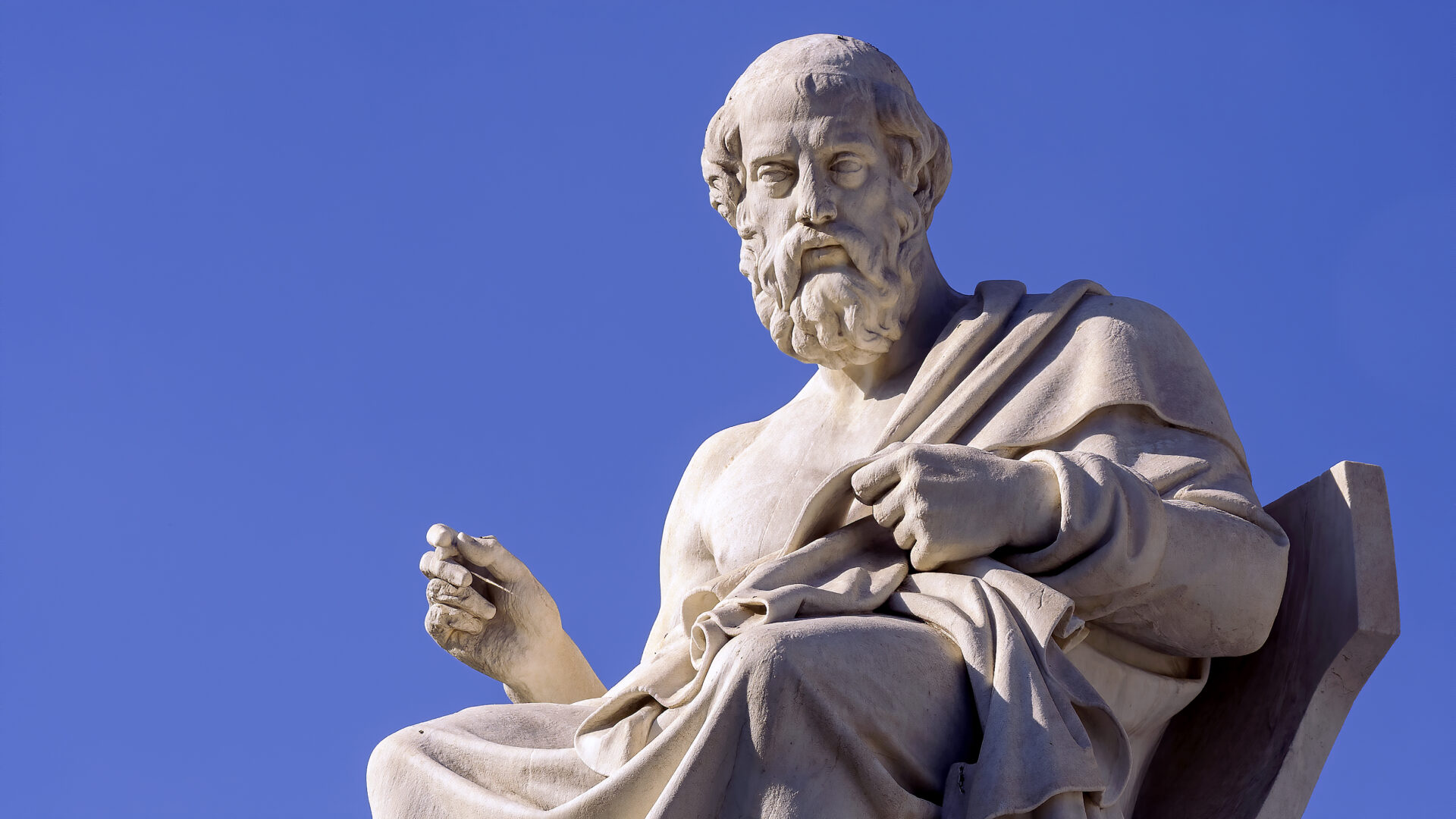Bert van den Berg, Leiden University
Plato of Athens (429-347BC) may be one of the most famous philosophers of all times. He was the thinker who came up with the “theory of forms” and founded the first academic institution. Yet we know little about his life, such as how he died, or where he might be buried, even.
But spectacular new recent research on papyri from Herculaneum by The Greek Philosophical Schools-project in Italy has provided new answers to those questions.
Carbonised papyrus scrolls, discovered in the 18th century in a Roman villa located near Herculaneum (between Naples and Pompeii) and known as the Villa dei Papyri, contain so much knowledge we have yet to uncover.
The library’s owner appears to have had a great interest in Greek philosophy, especially that of Epicurus, and had collected a substantial library of papyrus scrolls. But reading the 1,800 scrolls has proved quite challenging. While their carbonisation after the eruption of Vesuvius in AD79 preserved the scrolls, they are very brittle and very problematic to unroll.
Among these scrolls is a book by the Epicurean philosopher Philodemus of Gadara (1st century BC) about the history of Greek philosophy, with the title Arrangement of the Philosophers.
Over the last two centuries, various editions of Arrangement of the Philosophers have been published, though great portions of the texts remained illegible. But thanks to hyperspectral imagining it has become possible to distinguish between the black ink and the dark surface of the carbonised papyrus. We can now read approximately 30% more than we previously could.
This newly accessible portion on the history of Plato’s school, the Academy, includes information on the location of Plato’s tomb and his death around 348BC.
From other sources, we had already gathered that Plato was buried somewhere on the grounds of the Academy, a semi-public park-like area outside the city walls of ancient Athens that Plato had bought and where he had his school. From the new edition of the papyrus, it seems that Plato “was buried in the garden near the mouseion”. This garden was a more private part of the Academy, while the mouseion refers to a shrine of the Muses, the goddesses of music and harmony, that Plato himself had erected.
Before people rush out to dig for Plato’s grave, however, a word of caution is in order. As the editor of the text, Italian classicist Kilian Fleischer, admits with academic candour, his reading of the crucial Greek word etaphê (“was buried”) is by no means certain.
Be this as it may, a location near the mouseion would be quite fitting, as music plays an important role in Plato’s philosophy. In his great work The Republic, Plato insists on the place of music in the education of the young.
Listening to the right sort of music and especially to the right rhythms would have a beneficial influence on the soul, he posited. In his final work, The Laws, Plato uses the expression “mousikos anêr”, literally “a man of the Muses”, to refer to a man in possession of an elite education, such of the sort that was promoted by the Academy.
Plato’s fondness for the Muses throws light on Philodemus’s story about the death of Plato, another bit of the papyrus that we can now read much better.
According to Philodemus, at the end of Plato’s life he developed a fever and fell into a delirious state. When a Thracian girl, who was playing the flute – perhaps to comfort him – got the rhythm wrong, Plato appeared to regain consciousness and complained that the girl, because of her barbaric (by which he probably meant non-Greek) background, was unable to get it right.
This exchange was much to the delight of Plato’s companion, who from this brief revival concluded that Plato’s condition was not that critical after all. Even so, he died shortly after.
This is not the only story we have about Plato’s death. According to Diogenes Laertius, author of another history of Greek philosophy entitled Lives of Eminent Philosophers (3rd century AD), Plato died either at a wedding feast, or, alternatively, because of lice.
So, how likely is Philodemus’s particular story, for which we know of no other sources, to be true?
There are reasons to be suspicious. The death of ancient philosophers was meant to reflect their lives and teachings. If not, posterity was quite happy to invent an appropriate deathbed scene.
Thus, this newly discovered story about how Plato, even in his feverish condition, remained a discerning judge of all things musical, a true servant of the Muses, probably tells us more about how the Academy wished to remember its founder than how he actually died.
Bert van den Berg, Lecturer in Classical Languages and Culture, Leiden University
This article is republished from The Conversation under a Creative Commons license. Read the original article.




